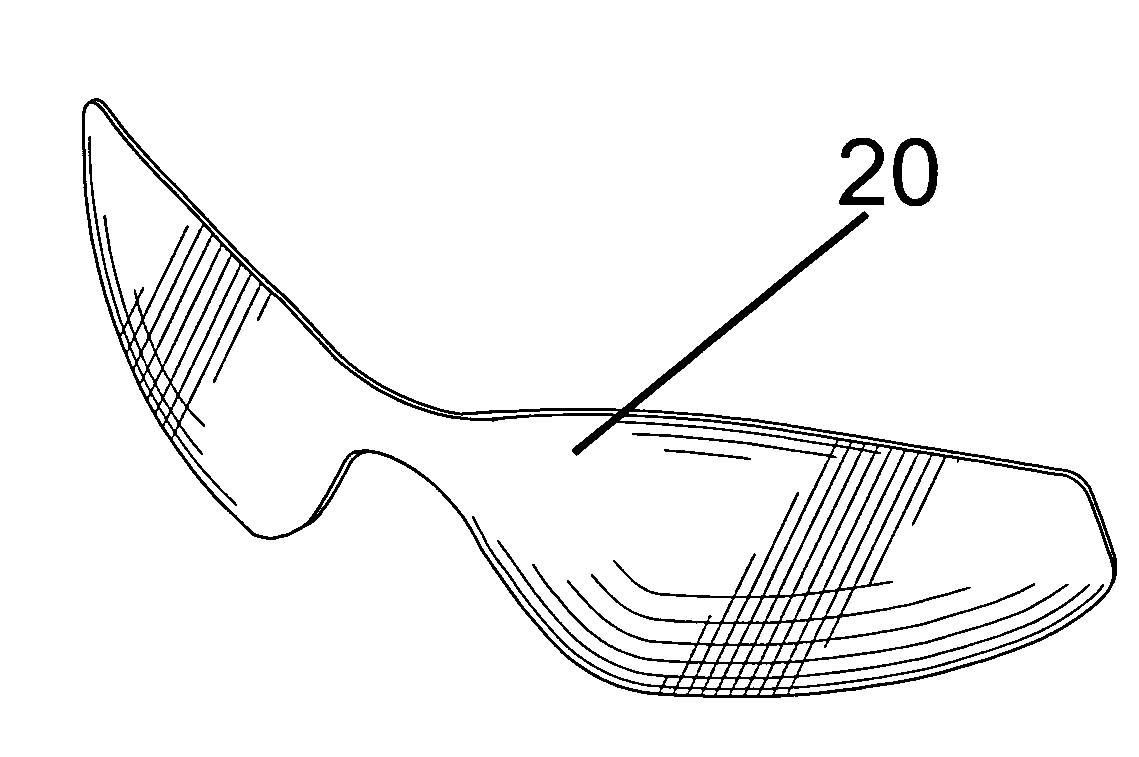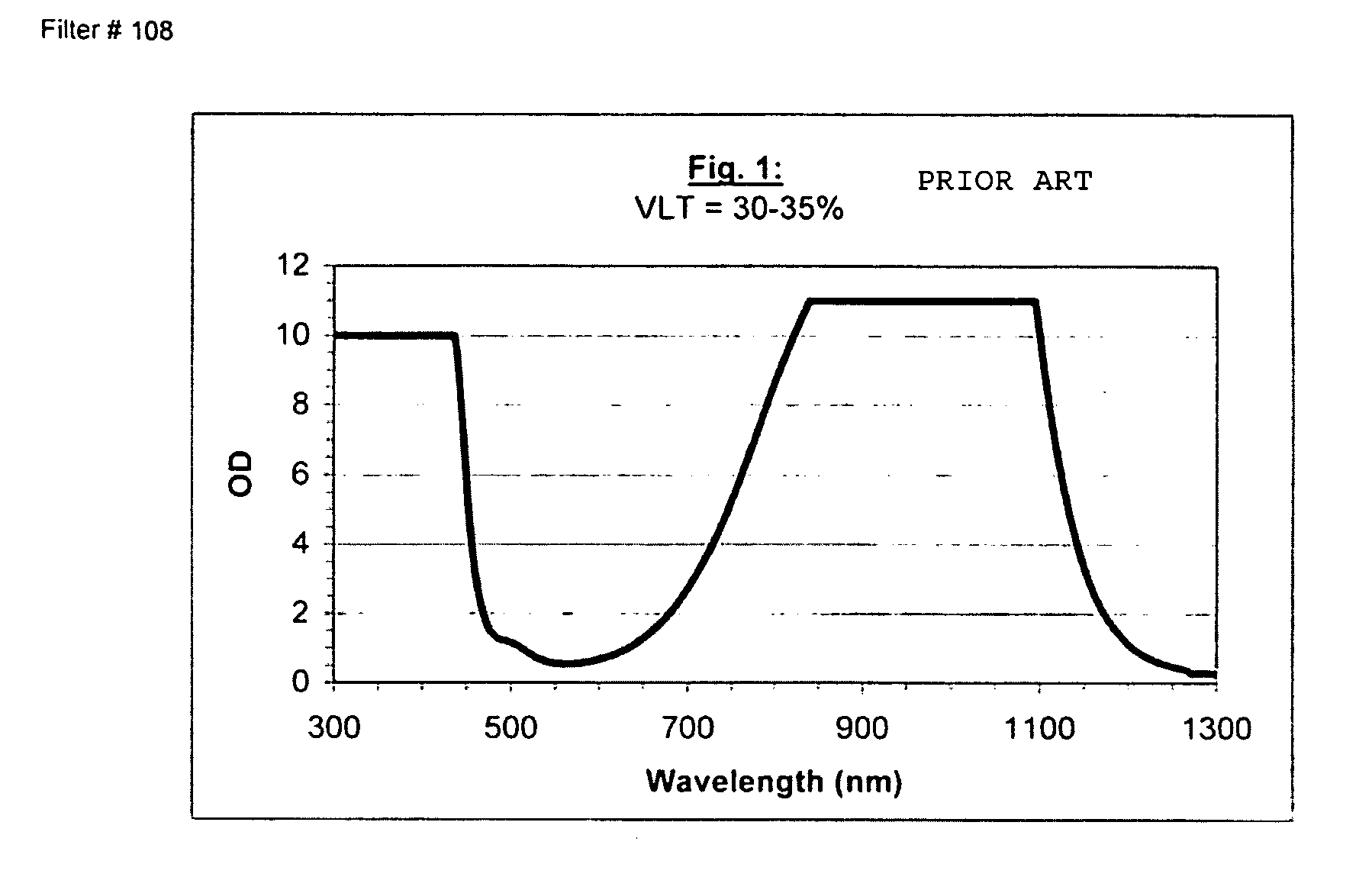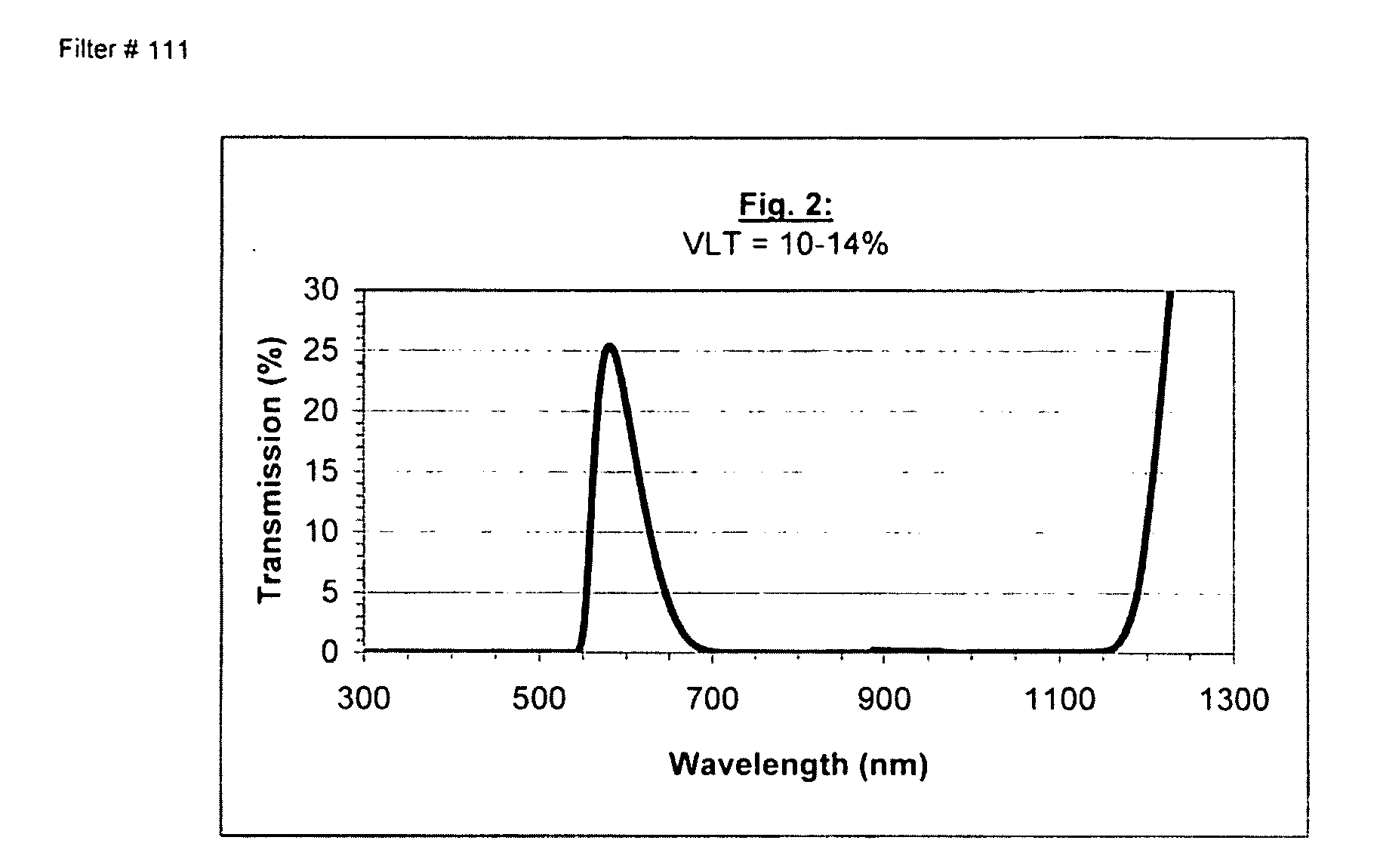Laser protective eyewear having improved glare protection
- Summary
- Abstract
- Description
- Claims
- Application Information
AI Technical Summary
Benefits of technology
Problems solved by technology
Method used
Image
Examples
Embodiment Construction
[0016]The best mode for carrying out the present invention is illustrated herein in the context of an optical filter that preferably includes dyes directed at filtering energy emissions in and about the wavelength ranges of blue, green, red and IR and more particularly in the range of traffic lights and lasers in the 530, 600-700 and military lasers while also including a color balancing dye(s) to improve the overall performance and aesthetic appeal of the optical filter. As was stated above, as applications that employ infrared and / or laser energy increase, the need to protect people against accidental exposure also greatly increases. For this reason, the present invention provides an optical filter capable of filtering energy emissions in the wavelength ranges that cover various laser energy emissions while also providing a lens that is color balanced in a manner that preserves a wearer's ability to distinguish colors and has a more pleasing overall color as compared to the prior ...
PUM
 Login to View More
Login to View More Abstract
Description
Claims
Application Information
 Login to View More
Login to View More - Generate Ideas
- Intellectual Property
- Life Sciences
- Materials
- Tech Scout
- Unparalleled Data Quality
- Higher Quality Content
- 60% Fewer Hallucinations
Browse by: Latest US Patents, China's latest patents, Technical Efficacy Thesaurus, Application Domain, Technology Topic, Popular Technical Reports.
© 2025 PatSnap. All rights reserved.Legal|Privacy policy|Modern Slavery Act Transparency Statement|Sitemap|About US| Contact US: help@patsnap.com



